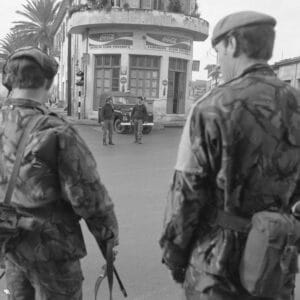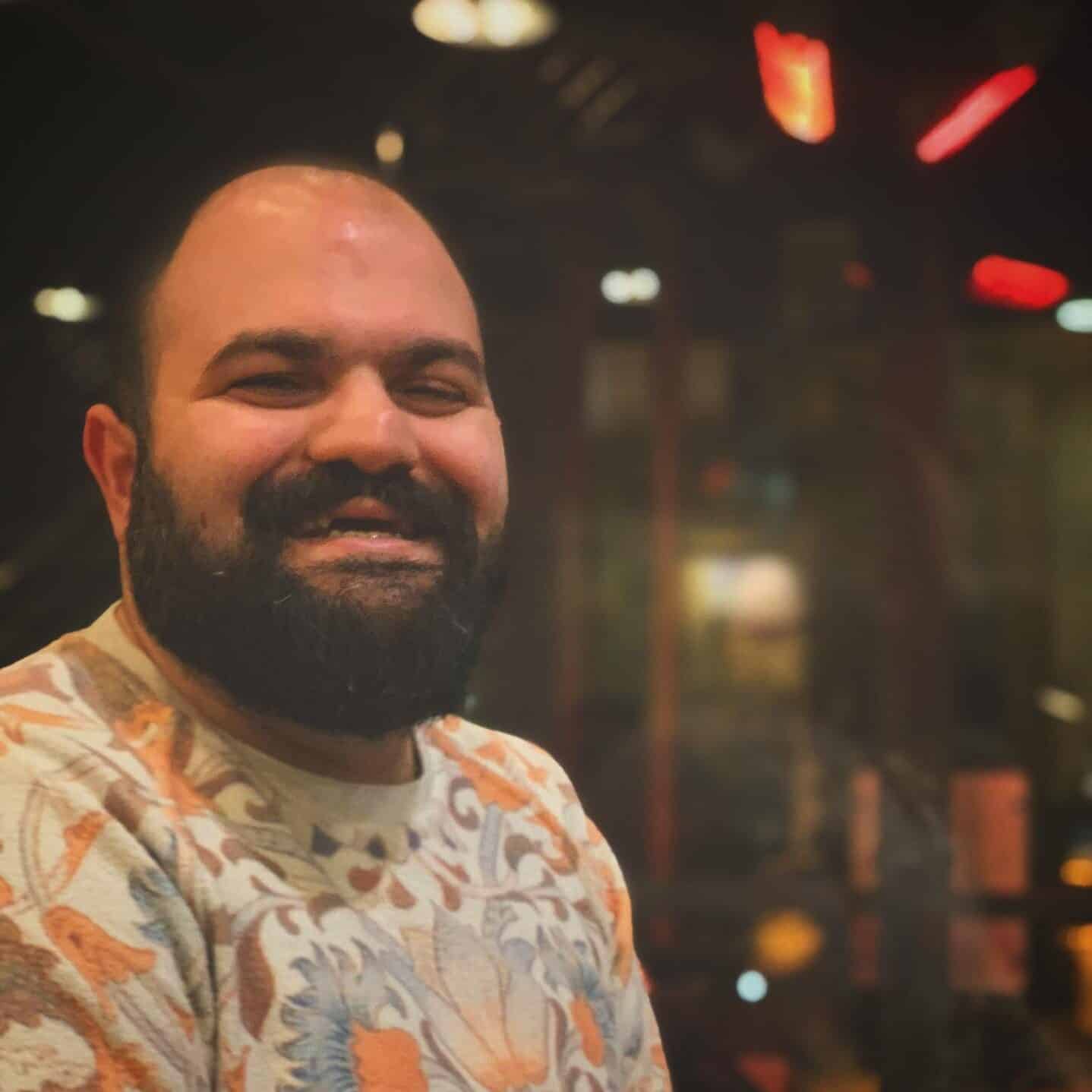On December 21, 1963 intercommunal violence broke out between Greek and Turkish Cypriots. Sixty years later we are still paying the price
A newly formed Republic of Cyprus was ripped apart 60 years ago, with fanaticism the shears that slashed the government formed by Greek Cypriots and Turkish Cypriots and opened a gash across Nicosia: the green line.
Left to pay the price for the fanaticism of politicians were everyday Greek and Turkish Cypriots that lived through the inter-communal violence.
Mutual distrust was aided and abetted by false-flag operations and disinformation on both sides. The only thing missing was a spark to set the wildfire, and that came on December 21, 1963.
The dominant narrative on the Greek Cypriot side has been that in 1963 the Turkish Cypriots mounted an insurrection, effectively seceding from the Republic which they had sought to undermine.
The Turkish Cypriot official narrative holds that the Greek Cypriots, the majority, never regarded them as equal partners and provoked the conflict by attempting to scrap the 1960 constitution: they were the victims reacting to the violence initiated by the Greeks.
And indeed tensions between Greek Cypriots and Turkish Cypriots began almost as soon as the Republic was formed.
Disputes over separate municipalities and taxation created a deadlock in government. A constitutional court ruled in 1963 that Archbishop Makarios had failed to uphold article 173 of the constitution which called for the establishment of separate municipalities for Turkish Cypriots.
Makarios subsequently declared his intention to ignore the judgement.
He then proposed 13 amendments to the constitution. Among these, the Greek Cypriot president and Turkish Cypriot vice president would lose their veto, the separate municipalities as sought after by the Turkish Cypriots would be abandoned, the need for separate majorities by both communities in passing legislation would be discarded and the civil service contribution would be set at actual population ratios (82:18) instead of the slightly higher figure for Turkish Cypriots.
The ‘Akritas’ plan, drafted at the height of the constitutional dispute by the Greek Cypriot Interior Minister Polycarpos Yiorkadjis, called for the removal of ‘undesirable elements’ of the constitution to allow power-sharing to work.
The plan stipulated an organised attack on Turkish Cypriots should they show signs of resistance to the measures, stating: “In the event of a planned or staged Turkish attack, it is imperative to overcome it by force in the shortest possible time, because if we succeed in gaining command of the situation (in one or two days), no outside intervention would be either justified or possible.”
The trigger came in December 1963, which has come to be known as ‘Bloody Christmas’. On December 21, a Greek Cypriot police patrol, ostensibly checking identification documents, stopped a Turkish Cypriot couple on the edge of the Turkish quarter in Nicosia. A hostile crowd gathered, shots were fired, and two Turkish Cypriots were killed.
On the same day, armed Turkish Cypriots from the paramilitary TMT (Turkish Resistance Organisation) clashed with Greek Cypriots loyal to Yiorkadjis. The conflict escalated fast and spread from Nicosia to Larnaca, Famagusta, Limassol, Paphos and Kyrenia.
On December 24 alone, 31 Turkish Cypriots and five Greek Cypriots were killed. There were attacks on Omorphita, Kumsal, Kaimakli and other parts of the capital, as well as nearby villages. Most of the Turkish Cypriots listed as still missing date from the intercommunal violence of 1963-64.
Newspapers at the time reported the forceful exodus of the Turkish Cypriots from their homes in the days and weeks that followed. According to The Times, threats, shootings and attempts of arson were committed against the Turkish Cypriots to force them out of their homes.
Fearing a Turkish invasion, Makarios agreed to a British proposal for troops from the British bases to deploy between the two sides. The first British soldiers from this truce force went on patrol in Nicosia on December 27, immediately trying to supervise a ceasefire. Under their supervision, 545 Turkish Cypriot hostages were exchanged for 26 Greek Cypriots.
The British general who commanded the British forces drew the agreed cease-fire line in Nicosia on a map with a green pencil, hence the term ‘Green Line’.

British soldiers were brought in on December 27 1963, ahead of the un peacekeeping force Unficyp in march 1964
In April 1964 Turkish Cypriots established a bridgehead at Kokkina, in the Tylliria region north of the island, providing them with arms, volunteers and materials from Turkey and abroad. Seeing this incursion of foreign weapons and troops as a major threat, the Makarios government invited Eoka leader George Grivas to return from Greece as commander of the Greek troops on the island and launch an attack on the bridgehead. Turkey retaliated by dispatching its fighter jets to bomb Greek positions.
The threat of a Turkish military escalation and a resolution of the United Nations Security Council calling for a ceasefire ended the standoff. The UN peacekeeping force, Unficyp, was established in Cyprus in March 1964, at the time mainly comprising troops from the British truce force. Few could have imagined then that Unficyp would still be present today, 60 years later.
The fighting ‘was the beginning of the end’
A Greek Cypriot woman from the now-occupied village of Akanthou, Maria Gregory, described these dramatic times, both immediately after in her village, and in the mid-60s in old Nicosia, where she was studying under a seamstress in Chrysalliniotissa.
At the time of the first fighting in 1963 and 1964, she was still living with her family in Akanthou, and finishing primary school.
“Our village did not have any Turkish Cypriots, but we had many workers that would come from nearby villages,” she said.
Gregory says she doesn’t remember this stopping after 1963 and 64, when many Turkish Cypriots had been forced to stay almost enclaved in their villages or areas in the cities.
“People would come and work as they always had,” she said, adding that this continued even up to the invasion in 1974.
Gregory says her family worked side-by-side with the Turkish Cypriots that came to the village, and she remembers her mother making coffee for all the workers, when they finished.
While they knew of the troubles and the harsh reality happening in the capital and other Turkish Cypriot areas, life in Akanthou seemed to go on as it always had.
But when Gregory went to Nicosia in 1965, reality hit, as by then it was already ostensibly cut in the middle.
Describing Chrysalliniotissa, an area near where the first inter-communal troubles had begun, she remembers seeing abandoned and empty homes near Ayios Kassianos, which were Turkish Cypriot. She remembers roadblocks cutting through neighbourhoods in the capital, where “we [Greek Cypriots] were not allowed to enter”.
“But the green line back then was more blurred in a way. Areas now abandoned and in the buffer zone, were still inhabited, however divided,” she said.
She does remember though some of the abandoned Turkish Cypriot houses being inhabited by Greek Cypriots even before the 1974 Turkish invasion.
Research produced by Canadian scholar Richard Patrick in the 1970s is considered among the most authoritative accounts of the period.
Patrick was an officer in Unficyp in the late 1960s and pursued his interest in the Cyprus conflict as a doctoral student in political geography at the London School of Economics. This research was published as ‘Political Geography and the Cyprus Conflict, 1963-1971.’
Summarising his findings, Patrick wrote: “The general trends of the December 1963–August 1964 period are clear. . . Decisions were made to implement the conflicting ideas of enosis [union with Greece] and taksim [partition] by various coercive movements. Violence induced a refugee movement which altered existing demographic fields.”
Subsequently a Turkish Cypriot civil and military administration was developed to govern the Turkish Cypriots and the land they held, he said.
“The result was the de facto partition of the Republic of Cyprus.”
From his research, Patrick argued that most Turkish Cypriots moved only after Turkish Cypriots had been killed, abducted, or harassed by Greek Cypriots within their village or quarter.
“Most refugees expected to return to their homes within a few months at the most, and it was this assumption of an early return that facilitated their departure in the first place,” he said.
These findings cast doubt on the argument that the Turkish Cypriots gathering into enclaves was a calculated move by hardline Turkish politicians wanting ethnic segregation.
Patrick goes on to note: “Any official administrative organisation to direct refugee movements was not established until the bulk of the refugees had already moved on their own initiative.”
Also speaking to the Cyprus Mail, two Turkish Cypriots from Avdimou, a Turkish Cypriot village on the outskirts of Limassol near Episkopi, describe life during the years they were enclaved in the village.
The two, who chose to remain anonymous, said the area had a few mixed villages, but Avdimou was a Turkish Cypriot village. Although they didn’t recall fighting, they did remember being forced to stay in the village, aid packages from Turkey with food and supplies, since they were not allowed to leave, and buses that previously passed through the area, avoiding the village.
“We couldn’t communicate with our relatives studying in Turkey,” one of them said.
Communications had been blocked with two roadblocks established from Limassol to Nicosia.
“In my second year of primary school, I couldn’t get my certificate because the roads were closed and it was not easy to move and we couldn’t communicate with Nicosia, we were enclaved, so I had a hard time to get my second-year certificate,” one said.
The woman said she did remember Turkish Cypriots refugees in 1963 and 64, coming to Avdimou from neighbouring villages, fleeing after the fighting.
“One day, we woke and there were a lot of people gathering in the village,” she said.
Asked to comment if all contact had been severed with Greek Cypriots, one said: “Even after 63 we still said hello and exchanged formalities with Greek Cypriots whose fields neighboured ours.”
One said that he even remembers his siblings helping a Greek Cypriot woman in her field to gather the crops, even after the first round of fighting.
They both said the situation calmed down a few years later, and both went to Limassol, where one attended the Turkish Cypriot high school.
The two even rented a property from a Greek Cypriot widow. However, after a few years, when the violence and the patrolling of both Turkish Cypriot police and Greek Cypriot police continued to intensify, they were told to leave.
The woman, the two remember, claimed they could not stay there, as the situation between the nationalists on both sides was worsening.
Both the Greek Cypriot and the Turkish Cypriots that spoke to the Cyprus Mail highlighted that the fighting 60 years ago was the beginning of the end, but they also noted that “for nationalism, people will find excuses the commit the most horrible of crimes”.
In her book Building Bridges in a Polarized World and Divided Cyprus, the daughter of former president Glafcos Clerides, Katie Clerides, describes the pain of what happened in the 60s: “When we started the conflict resolution groups with my husband Costas in the early 1990s, I gradually began to realise that after 1963, when we had the first intercommunal troubles and the first division of Nicosia, I had been missing the contact with the Turkish Cypriots.”
She added that through her renewed contact, she began finding part of herself.
“For me, the loss of the other half of my country is not just the absence of place, but also the loss of the people who are the past of Cyprus for me.”










Click here to change your cookie preferences